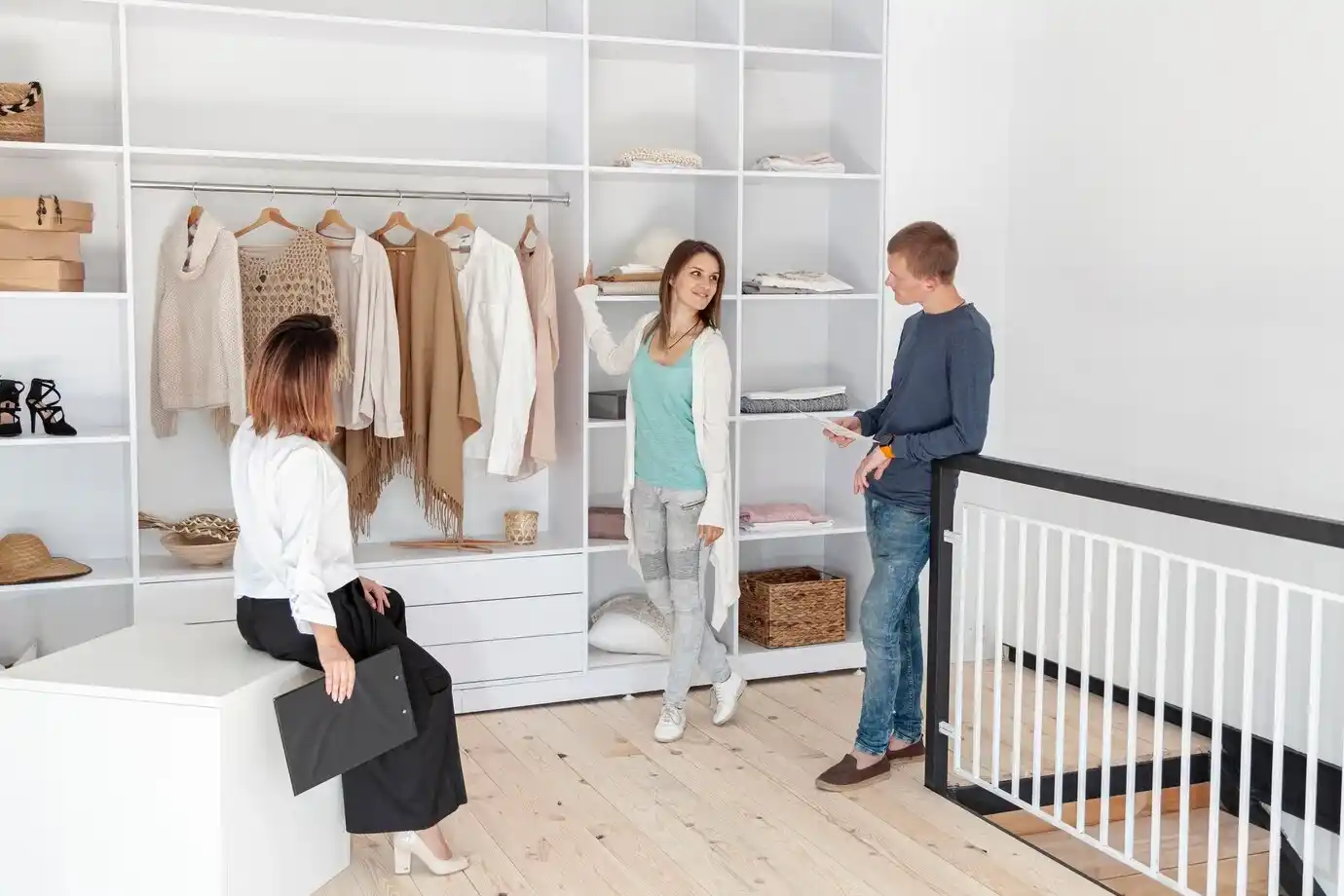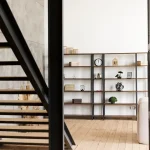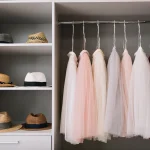Creating a family-friendly closet can be a game-changer for household organization. With everyone’s belongings in one space, the challenge lies in making sure it’s functional, accessible, and clutter-free. Whether you’re dealing with a small closet or a spacious walk-in, these tips and insights will help you design a space that works for every member of your family. Let’s explore how to achieve this with practical solutions and personal touches.
Understanding the Needs of a Family Closet
Designing a closet that caters to the entire family requires thoughtful planning. A family-friendly closet is more than just a storage area; it’s a well-organized space that makes daily routines easier and more efficient.
Create Designated Zones
Peter Walsh, a professional organizer, emphasizes: “A family closet needs to be a functional and organized space for everyone. Create designated zones for each family member to avoid clutter and chaos.” This means allocating specific sections for each person’s clothes and accessories. By doing this, you minimize the chance of mix-ups and make it easier for everyone to find what they need.
When we redesigned our family closet, we created separate zones for each member. This simple change drastically reduced the time spent searching for items and made it easier for our kids to keep their space tidy.
Involve the Whole Family
Marie Kondo, an organizing consultant, advises: “Involve your family in the decluttering process. Teaching kids the joy of tidying can create lasting habits.” Getting everyone involved not only helps with the organization process but also instills a sense of responsibility.
Practical Tip: Set aside a day to declutter together. Make it a fun activity with rewards for the most organized or creative arrangements. This can turn a mundane task into a bonding experience.
Design by Age and Need
Joanna Gaines, an interior designer, suggests: “Designate a specific area for each family member, considering their age and needs. This helps everyone find what they need quickly.” For younger children, low shelves and accessible hooks are ideal. For adults, higher shelves and drawers work well.
Personal Experience: We installed low-hanging rods and adjustable shelves in our kids’ section, making it easy for them to reach their clothes. This small adjustment helped them become more independent and kept their area neat.
Use Color-Coding and Labels
Bobby Berk, an interior designer, advises: “Use color-coded hangers or labels to differentiate between family members’ belongings, especially in shared closets.” This technique helps quickly identify whose items are whose, reducing confusion and clutter.
Implementation Tip: Choose a color scheme for hangers and bins that aligns with each family member’s preferences. This not only adds a fun element but also improves organization.
Create Dedicated Spaces
Hilary Farr, an interior designer, notes: “Create a designated space for shoes, accessories, and outerwear to keep the closet tidy and organized.” Allocating specific areas for these items helps maintain order and makes finding what you need easier.
Practical Solution: Install shoe racks, accessory trays, and hooks for outerwear. This keeps everything in its place and ensures that the closet remains clutter-free.
Make Storage Accessible for All
Nate Berkus, an interior designer, emphasizes: “Incorporate storage solutions that are accessible to everyone, such as low shelves for children’s clothes and out-of-reach storage for delicate items.” Accessibility is key to ensuring that everyone, including children, can easily use the closet.
We placed frequently-used items at a height where our kids could reach them independently. For items that we needed to keep out of their reach, like delicate clothing, we used higher shelves.
Practical Storage Solutions
1. Adjustable Shelving
Adjustable shelves offer flexibility and can be modified as your family’s needs change. This is particularly useful for growing children whose storage needs will evolve over time.
2. Over-the-Door Organizers
Utilize over-the-door organizers for shoes, accessories, or small items. They maximize unused space and keep items visible and accessible.
3. Drawer Dividers
For small accessories, use drawer dividers to keep everything organized. This helps prevent items from getting mixed up and makes it easier to find what you need.
4. Baskets and Bins
Incorporate baskets and bins for items like toys, hats, or scarves. Labeling these containers helps everyone know where things belong and keeps the closet looking tidy.
Resources for Family-Friendly Closets
1. The Association of Professional Organizers (APO)
The APO offers resources and certifications for professional organizers, providing valuable insights into effective storage and organization strategies for families.
2. National Association of Home Builders (NAHB)
The NAHB provides studies on home design trends and consumer preferences, which can offer information on closet design and storage solutions for families.
3. Consumer Reports
Consumer Reports tests and reviews various home products, including storage solutions and organizers. Their recommendations can help you choose the best products for your family’s needs.
4. Child Development Experts
Research on child development and behavior can offer insights into creating child-friendly and organized closet spaces that support their growth and independence.
Conclusion
Creating a family-friendly closet involves more than just arranging clothes. It’s about designing a space that meets the needs of everyone in the household while promoting organization and efficiency. By creating designated zones, involving the whole family, and using practical storage solutions, you can transform your closet into a functional and welcoming space.
Remember, a well-organized closet is not only visually pleasing but also makes daily routines smoother. With these tips and insights, you’ll be well on your way to designing a closet that works for every member of your family.










